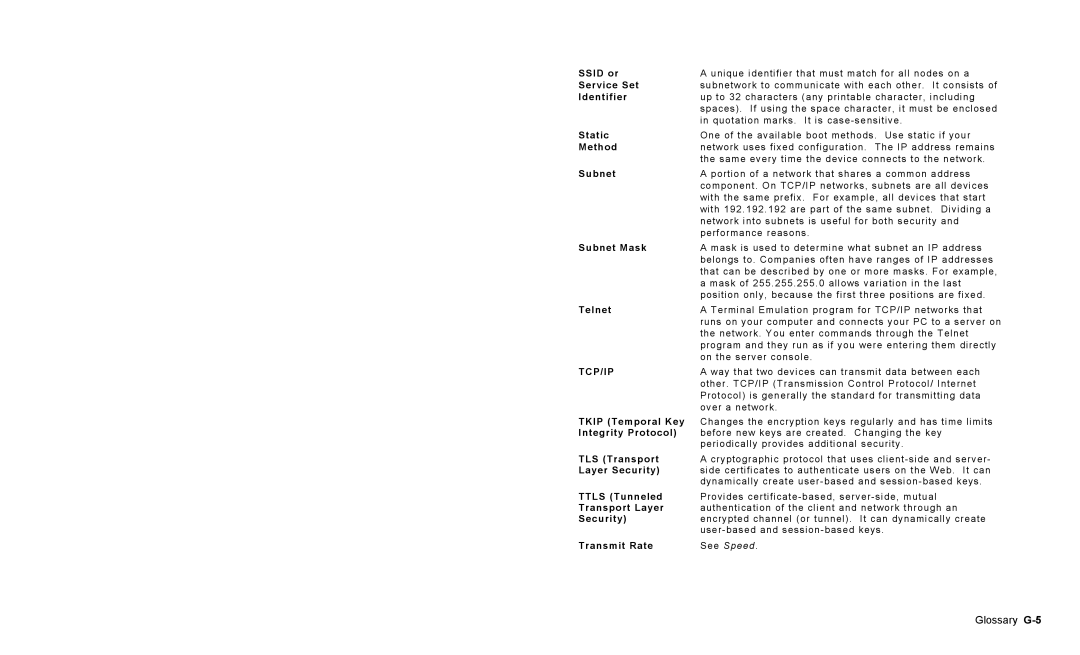SSID or | A unique identifier that must match for all nodes on a |
Service Set | subnetwork to communicate with each other. It consists of |
Identifier | up to 32 characters (any printable character, including |
| spaces). If using the space character, it must be enclosed |
| in quotation marks. It is |
Static | One of the available boot methods. Use static if your |
Method | network uses fixed configuration. The IP address remains |
| the same every time the device connects to the network. |
Subnet | A portion of a network that shares a common address |
| component. On TCP/IP networks, subnets are all devices |
| with the same prefix. For example, all devices that start |
| with 192.192.192 are part of the same subnet. Dividing a |
| network into subnets is useful for both security and |
| performance reasons. |
Subnet Mask | A mask is used to determine what subnet an IP address |
| belongs to. Companies often have ranges of IP addresses |
| that can be described by one or more masks. For example, |
| a mask of 255.255.255.0 allows variation in the last |
| position only, because the first three positions are fixed. |
Telnet | A Terminal Emulation program for TCP/IP networks that |
| runs on your computer and connects your PC to a server on |
| the network. You enter commands through the Telnet |
| program and they run as if you were entering them directly |
| on the server console. |
TCP/IP | A way that two devices can transmit data between each |
| other. TCP/IP (Transmission Control Protocol/ Internet |
| Protocol) is generally the standard for transmitting data |
| over a network. |
TKIP (Temporal Key | Changes the encryption keys regularly and has time limits |
Integrity Protocol) | before new keys are created. Changing the key |
| periodically provides additional security. |
TLS (Transport | A cryptographic protocol that uses |
Layer Security) | side certificates to authenticate users on the Web. It can |
| dynamically create |
TTLS (Tunneled | Provides |
Transport Layer | authentication of the client and network through an |
Security) | encrypted channel (or tunnel). It can dynamically create |
| |
Transmit Rate | See Speed. |
Page 77
Image 77
